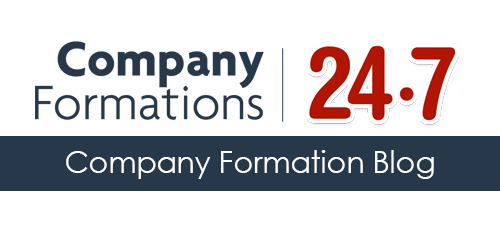What’s in a logo? Well, quite a lot actually. It serves as the singular most important visual depiction of your business – it can leave a lasting impression and it should encapsulate our offering in an instant.
Logos: they’re important, seriously
But what’s there to do when you’re looking at a budget of peanuts yet you want the results of a multi-million pounds corporation? Well, in this blog, we’ll tell you.
So, how can you get a logo designed for peanuts?
Let’s take a look at the options before you when it comes to your logo:
1. Run a logo design competition
You have an array of options before you for making the most of talent pools where freelancers, students and freshly graduated professionals are seeking exposure and to build up a portfolio. These include websites such as DeviantArt (a creative community), design graduate forums (such as the Graphic Design Forums) and even universities that can hold student competitions on your behalf.
Cost-Effective summary: Usually completely free (unless you wish to offer some form of cash prize). What’s more, the results can be every bit as good as the professional logo concepts and designs that you may well receive from a qualified, experienced design professional.
2. Design it yourself
There are an almost innumerable amount of logo designer tools online that claim to provide a completely free service. This can range from the incredibly basic and completely free, to websites that provide a free tool to design, where after you pay a fee to download the file (such as Logo Factory).
Whilst these are the main routes many choose when designing a logo themselves, we provide a far better, step by step, approach following this section.
Cost-Effective summary: Whilst some are completely free, more often than not they produce poor results; whereas others claim to be free, only to present a fee for downloading any resulting logo.
3. Purchase a premium template
A range of websites present superior quality logo design from professionals for prices that range upwards of £25; a leading example of which would be Graphic River.
There are also websites where you can find free templates, such as Logo Logo, however the ranges to be found within these collections are incredibly limited, particularly if you operate within a niche industry.
Cost-Effective summary: Priced from £25 these are definitely within the ‘peanuts’ realm of pricing, whilst providing for highly polished logos. The only downside is that your logo won’t be unique. However, you can check out how many times each template has been purchased (usually far less than 100), and so the chances of your consumers coming across your logo somewhere else are incredibly limited).
4. Hire a freelancer
Freelancers are far more affordable than many people may imagine, and they provide for the ultimate logo option of a professional and completely unique design. Prices can range upwards of £20, however it seems that there’s a definite split within the industry, where quality comes into its own from £100 and upwards. Websites such as PeoplePerHour, Upwork and Freelancer are leading examples of world class freelancer talent pools.
There’s also another competitor in this realm – Fiverr.com, where service start from just $5 (or around £3 sterling); that said this is an offering where results differ drastically.
In summary the saying that ‘you get what you pay for’ has never rung truer than when applied to design services, particularly logo design where a true professional service will deliver a design that tells a story and encapsulates your brand in an instant.
Cost-Effective summary: Freelancing services vary in terms of quality. The key to finding the right designer for your needs is all about setting a realistic budget and scouring the market, being sure to check out portfolios of past work in detail.
5. Commission a design agency
OK, so this last option is definitely outside of the peanut budget. However it’s worth exploring this option simply to be fully informed as to just what you may be sacrificing when having a strict budget.
Design agencies are the cream of the logo designing crop. They offer stringent service level agreements that define just what you can expect from them and they tend to have polished concept and development processes, offering unlimited rounds of revisions and being happy to take on-board any type of critique.
Cost-Effective summary: Design agencies can be seriously bank balance busting, but the results (and generally hassle free process) may well be worth it.
The ultimate guide to designing your logo yourself
1. Brainstorm
Designing a logo may at first seem like a simple process, however if you’ve attempted to dive right into drawing you may have found that the outcome has been decidedly lacklustre.
So rather than delving right on in, you should instead begin by brainstorming, honing in on:
- Your USP
- Your product or service
- Your company brand and the values that define you
- Your target market and what defines them
2. Lock down the style elements by putting together a mood board
There are three basic elements of a logo, here’s a guide to constructing a mood board to guide your choices.
- Colour
Colour is something that can have an immediate impact upon a consumer, with various colours linked to certain emotions (here’s a great blog article on the Psychology of colour in logo design for further reading).
Take a look at how some of the world’s leading colours use colour theory in their designs.
- Font
Font is equally something that has an impact upon the subconscious, take a look at these examples from Crazy Egg’s blog on the Psychology behind type, and the impression that you naturally link with them.
You should also decide whether your logo will even feature your company name, and whether you wish to factor in your slogan (if you have one).
- Imagery
The use of imagery within logos is, ideally, very subtle and abstract, rather than explicit. So, for example, if you sell gourmet food, you wouldn’t choose to feature a steak within your design, but may opt for a silhouette of cutlery. Take a read of this guide to symbols and their impact in logo design, and this blog on hidden messages within logos.
3. Draft some ideas
Now it’s time to put together some draft designs to see what works, what doesn’t and what may be worth exploring. Above all else keep a focus on simplicity and ensure that you avoid choosing too many colours.
4. Putting it altogether: Learning from examples
Before you get creating with putting it all together in the fourth and final step, you should polish your ideas by gaining inspiration from competitor logos, looking at how they speak to the target market, taking in the colours that they use and considering the style of font that may accompany the imagery.
5. The technical bit
For producing your logo you need to find an online logo editor that provides for the flexibility you need, whilst offering plenty of help through a tool that provides an easy way to add in shapes, images, colours and that includes a great range of fonts. Here are some that you may wish to explore: Logo Makr, Freelogo Services, Online Logo Maker and Make Logo Online Free.



